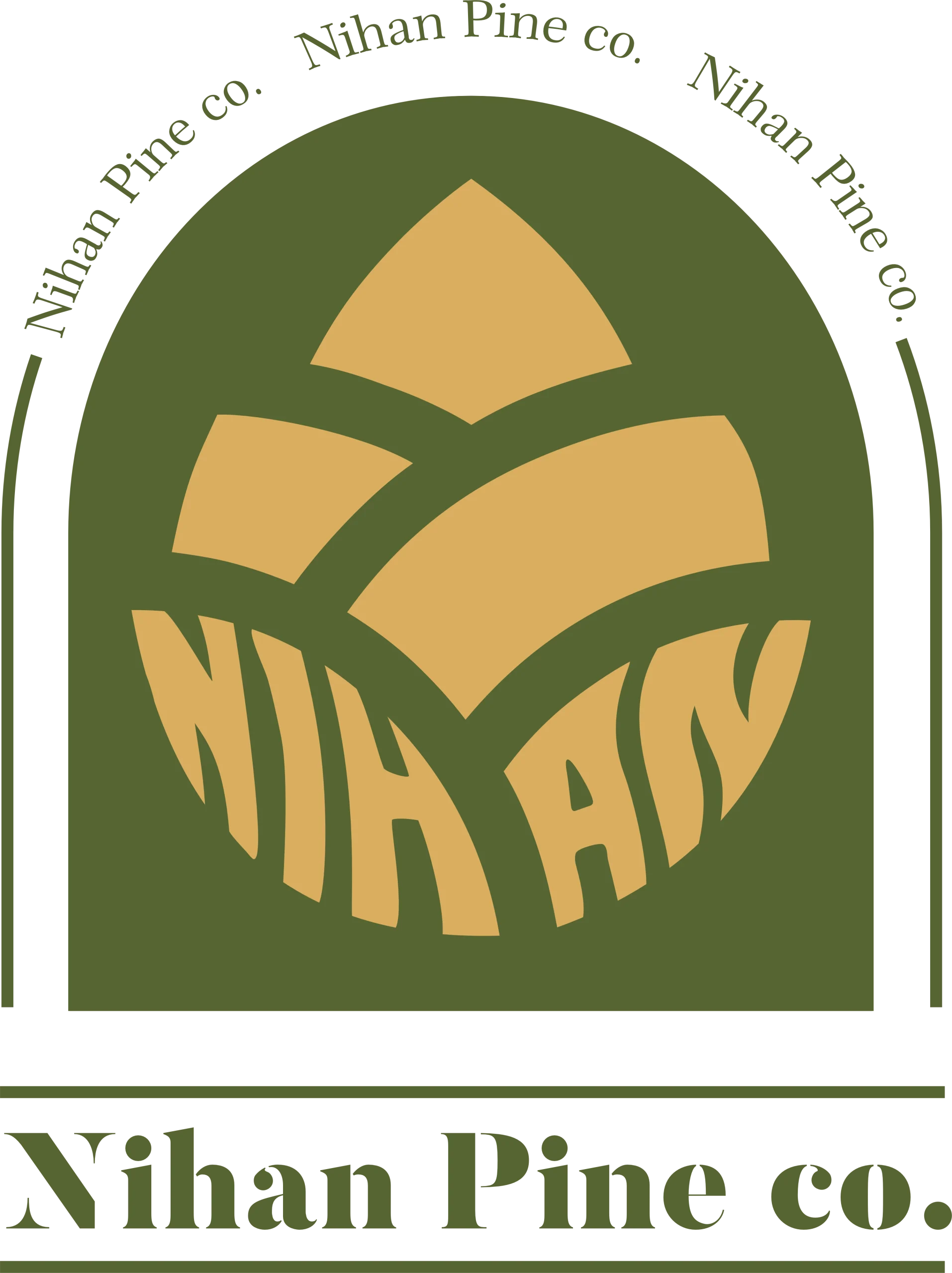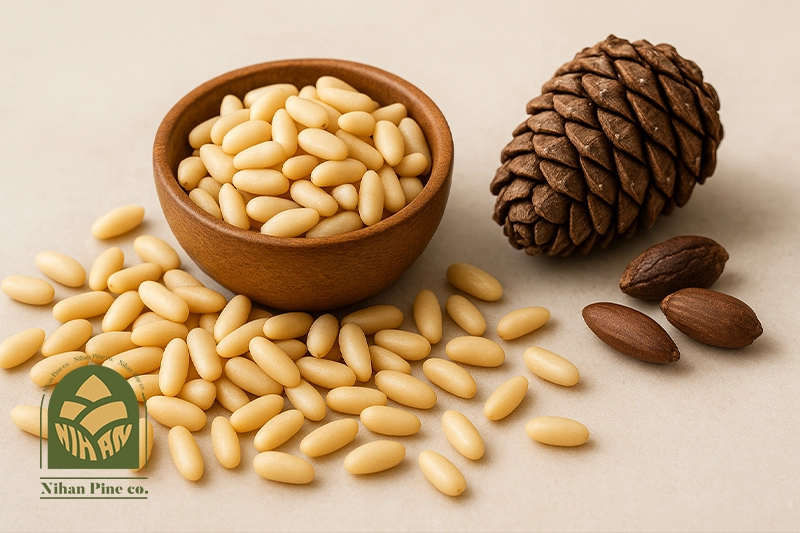Afghan chilgoza pine nuts are a premium, nutrient-dense nut—about 191 kcal per 28 g, ~19 g fat and ~4 g protein—valued for buttery flavor and healthy unsaturated lipids. For exports, shelled kernels are commonly classified under HS 0802.92 and require tight specs on moisture, defects, and packaging to clear customs smoothly.
Introduction
Afghan chilgoza (Pinus gerardiana) stands at the intersection of gourmet taste and functional nutrition. Its creamy texture, subtle resinous aroma, and high-quality lipid profile make it a favorite for confectionery, bakery, and snack applications. In B2B trade, however, success depends on codifying quality (size, defects, moisture), documenting the product precisely (HS code, origin, packing list), and protecting freshness (oxygen-managed packs, controlled storage). This guide distills what buyers and importers need to know—from nutrition and grades to paperwork and packaging.
What Exactly Is Chilgoza?
Chilgoza refers to the edible seeds of Pinus gerardiana, a high-altitude pine whose kernels are elongated and pale-ivory with a naturally sweet, buttery taste. Compared with many tree-nuts, chilgoza kernels are softer, with a delicate snap and a pleasant, lingering aroma—ideal for pesto, praline, halva, and premium trail mixes.
Mini-Takeaway: Think of chilgoza as a “culinary-plus” nut: gourmet flavor and favorable nutrition, which justifies premium positioning.
Nutrition Snapshot (per 28 g / 1 oz)
- Calories: ~191
- Total fat: ~19.4 g (mostly unsaturated)
- Protein: ~3.9 g
- Carbs / Fiber: ~3.7 g / ~1 g
- Key minerals: phosphorus (~13% DV), iron (~9% DV), potassium (~4% DV)
Practical angle for marketers: these numbers support “good source of healthy fats” and “plant protein” narratives (claims must follow your market’s labeling rules).
Mini-Takeaway: Use the nutrition panel to tell a simple story: energy-dense, unsaturated-fat rich, with useful minerals.
Lipids 101: Why Pine Nut Fat Is Special
Pine-nut lipids include notable fatty acids such as pinolenic acid, explored for satiety and lipid-profile modulation. While regulatory-approved health claims vary by market, R&D teams often lean on peer-reviewed literature to position pine-nut oil and high-fat bakery lines more credibly.
Mini-Takeaway: The lipid profile isn’t just marketing gloss—it’s a product advantage when framed conservatively and compliantly.
Industry Grades & Visible Defects
Common buyer language groups quality by:
- Size / Count: kernels per 100 g or per lb; larger, uniform kernels command higher prices.
- Defect rate: % broken, shriveled, rancid, insect-damaged, shell fragments.
- Color: ivory to light beige; avoid yellowing (oxidation signal).
- Moisture: typically ≤ 5% for kernels (buyer-specific).
Agree on inspection method (AQL), sieve sets (for size), and defect definitions in the contract.
Mini-Takeaway: Grades become enforceable only when definitions, methods, and tolerances are written into the PO.
Spec Sheet: A Practical Baseline
A typical B2B spec for kernels may include:
- Moisture: ≤ 5.0%
- FFA (as oleic): ≤ 1.5% at pack
- Peroxide value: ≤ 5 meq O₂/kg oil at pack
- Aflatoxin (total): per destination law (e.g., ≤ 10–20 ppb)
- Defects / foreign matter: max % by type
- Microbiology: as required by buyer category (RTE vs ingredient)
Mini-Takeaway: Specs protect both sides—write them tightly and tie them to independent lab COAs.
HS Codes & Customs Basics (Buyer View)
For international trade, buyers frequently reference:
- 0802.91 – Pine nuts, in shell
- 0802.92 – Pine nuts, shelled
Downstream national codes (e.g., HTS/Schedule-B or TARIC) extend to 8–10 digits. Always confirm with your broker for your lane. Keep your commercial invoice, packing list, certificate of origin, and phytosanitary or fumigation docs (if required) consistent with HS classification.
Mini-Takeaway: The right HS code + coherent paperwork prevents reclassification, delays, and surprise duties.
Packaging, Shelf Life & Storage
Fat-rich nuts oxidize. Best practices:
- Primary: vacuum or nitrogen-flushed, food-grade pouches (1×10 kg or 2×5 kg)
- Secondary: corrugated cartons with liner
- Barriers: low O₂ transmission; keep away from light and heat
- Storage: cool, dry; for long transits, consider cold-chain
Mini-Takeaway: Oxygen control is your lifeline—pack light- and oxygen-tight to protect flavor and color.
Labeling & Compliance (Importer Checklist)
Include product name, net weight, lot/batch, pack date/BBE, storage, and allergen statements. Nutrition and claims must match destination rules; keep marketing language conservative unless you’ve vetted claims.
Mini-Takeaway: Labels sell—but compliance saves you. Align QA, reg-affairs, and marketing early.
Buyer’s One-Page Checklist
- Final spec & sample approval
- Contracted AQL and independent pre-shipment inspection
- HS code verification for your market
- COA (moisture, PV/FFA, aflatoxin) tied to lot numbers
- Packaging confirmed (materials, net weights)
- Insurance + Incoterms agreed
Mini-Takeaway: A repeatable checklist cuts claims and makes reorders smooth.
Conclusion
Chilgoza is a premium nut with credible nutrition and a gourmet profile. Convert that intrinsic value into smooth trade by locking specs, verifying HS classification, managing oxygen exposure, and institutionalizing third-party inspections. Do this once, and you’ll protect margins on every shipment thereafter.
Sources & Useful Reads
- MyFoodData — Pine Nuts Nutrition (USDA-derived): https://tools.myfooddata.com/nutrition-facts/784404/oz/1
- MyFoodData — Dried Pine Nuts (alt ref): https://tools.myfooddata.com/nutrition-facts/170591/wt2
- USITC HTS (Chapter 8; 0802.91/0802.92): https://hts.usitc.gov/reststop/file?filename=Chapter+8&release=currentRelease
- TariffNumber (EU CN) — 08029200 Pine nuts, shelled: https://www.tariffnumber.com/2025/08029200
- Intoglo (HTS subheadings overview): https://www.intoglo.com/hscode/tariff/080291-nuts-edible-pine-nuts-fresh-or-dried-in
- Khaama Press — Afghanistan pine-nut exports (news snapshot, 2025): https://www.khaama.com/afghanistan-exports-over-1100-tons-of-pine-nuts-worth-14-million/
- Review on pine-nut oil & pinolenic acid (PubMed): https://pubmed.ncbi.nlm.nih.gov/33831456/
- Review (ScienceDirect mirror): https://www.sciencedirect.com/science/article/pii/S0163782721000138
FAQs About Afghan Chilgoza Pine Nuts: Nutrition, Grades & Export Standards
-
What’s the most used HS code for shelled kernels?
0802.92 (confirm local sub-digits with your broker).
-
Ideal moisture for kernels?
Often ≤ 5%—set your own target per shelf-life needs.
-
Are pine nuts gluten-free?
Yes, naturally; manage cross-contact and labeling.
-
Do I need cold storage?
For long, warm transits it helps—decide via shelf-life goals and oxidation targets.
-
Best pack sizes for B2B?
Commonly 10 kg (1×10) or 10 kg (2×5) in cartons; retail SKUs vary

